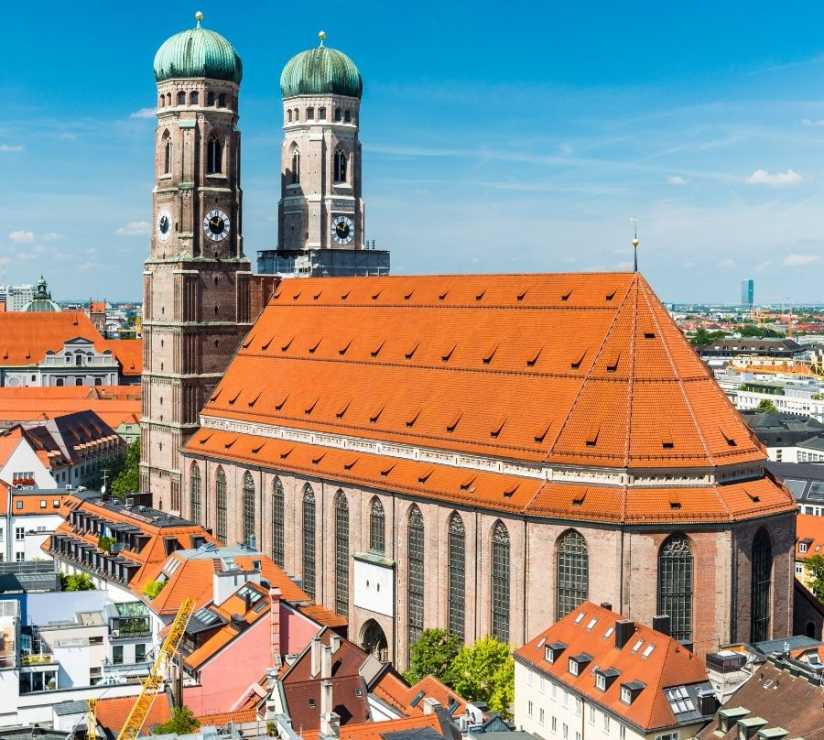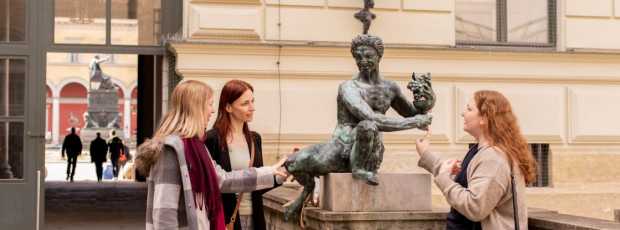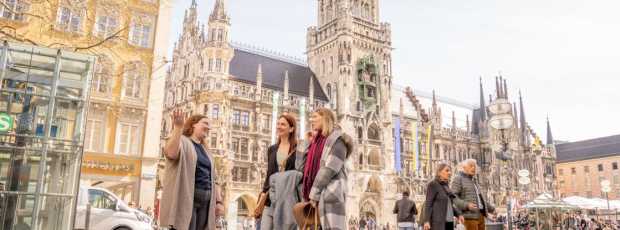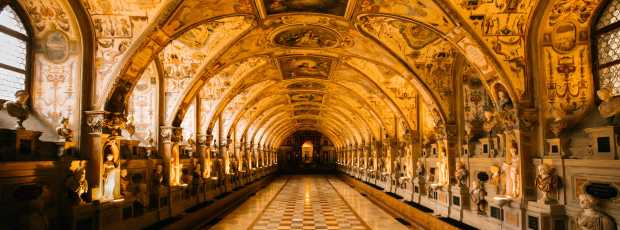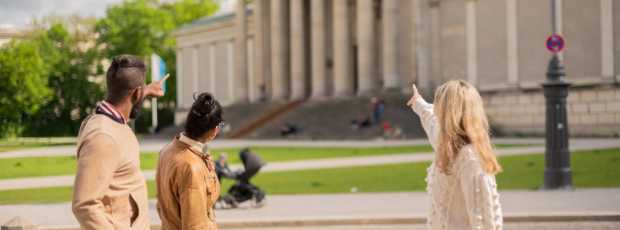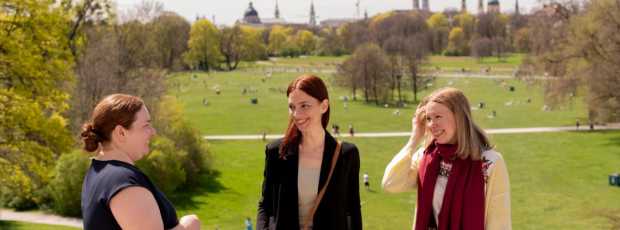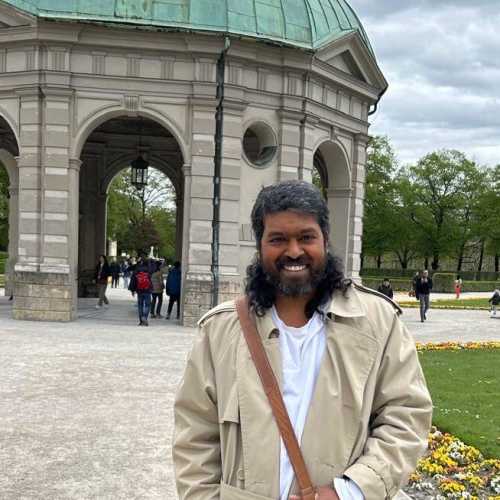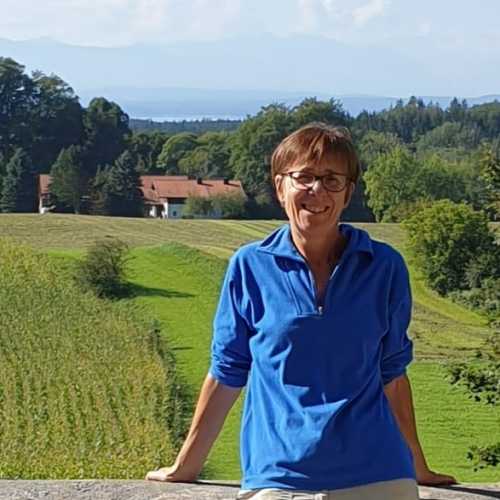Table Of Contents
- What Makes Munich Worth Visiting?
- The Heart of Munich: Marienplatz and Beyond
- Munich's Green Spaces: More Than Just Parks
- Olympic Legacy: More Than Sports History
- Beer Culture: Beyond Oktoberfest
- Cultural Munich: Arts and Learning
- Day Trips and Nearby Attractions
- Modern Munich: Sports and Innovation
- Practical Munich: Getting Around and Local Tips
- What You Shouldn't Miss (And What You Can Skip)
Look, I've lived in Munich my entire thirty-something years, and I'm tired of reading travel guides that make this city sound like a fairy tale written by someone who spent exactly 48 hours here. The real sites to see in Munich aren't always the ones plastered on postcards, though some of those postcards actually got it right.
This isn't going to be another listicle promising you'll fall in love with every cobblestone. Munich is a working city where real people live, drink beer on weekdays, and complain about tourists blocking the sidewalks. But it's also genuinely beautiful, historically significant, and yes, worth your time.
What Makes Munich Worth Visiting?
Munich is Bavaria's capital and Germany's third-largest city, but it maintains the feel of a large town where everyone seems to know someone who knows someone. The old town spreads out from Marienplatz like spokes on a wheel, connecting magnificent buildings with quiet residential streets where locals actually live.
The city balances its role as a major economic center with an almost stubborn dedication to tradition. You'll find beer gardens next to tech company headquarters, and beer halls where construction workers sit beside venture capitalists. This isn't quaint - it's how the city actually functions.
The Heart of Munich: Marienplatz and Beyond
Is the New Town Hall Really Worth the Hype?
The short answer: Yes, but not for the reasons tourists think.
The New Town Hall (Neues Rathaus) dominates Marienplatz with its Gothic Revival architecture that's actually younger than the Statue of Liberty. Most visitors come for the Glockenspiel, which performs daily at 11 AM, noon, and 5 PM from March to October. I've watched it hundreds of times, and it's still oddly satisfying.
But here's what guidebooks won't tell you: the real show happens after the tower performance ends. Watch the crowd disperse and you'll see the square transform back into a working space. The Neues Rathaus isn't just a tourist attraction - it's Munich's actual city hall where real municipal business happens daily.
The town hall offers elevator access to its viewing platform for a few euros. Skip the crowds at Alter Peter and climb here instead for equally impressive views of the city's rooftops without the claustrophobic spiral staircase.
Why Old Peter Still Matters
Peter's Church (Old Peter to locals) has been watching over Munich since the 12th century. The 299-step climb up Alter Peter remains one of Munich's most challenging tourist activities. I've done it exactly three times in my life - once as a child, once to impress a date, and once to settle a bet.
The church itself deserves attention beyond its tower. The baroque interior feels genuine rather than museum-like, partly because locals still attend services here regularly. Peter's Church represents Munich's relationship with its Catholic heritage - present, respected, but not dominating daily life.
Looking for a private city experience in Munich?
Explore the city with a local who plans a private day just for you; no groups, no scripts.
Munich's Green Spaces: More Than Just Parks
What's Actually Special About the English Garden?
The English Garden (Englischer Garten) stretches four kilometers through Munich, making it larger than Central Park. But size isn't what makes it remarkable - it's how seamlessly it integrates into city life.
The Eisbach wave draws surfers year-round, creating the surreal sight of wetsuit-clad athletes riding waves next to beer gardens where businesspeople eat lunch. This isn't a tourist gimmick - it's a genuine subculture that's been part of Munich for decades.
The Chinese Tower stands at the Englischer Garten's heart, surrounded by one of Munich's largest beer gardens. Office workers grab quick lunches here, families celebrate birthdays, and students study under the trees.
Walk north toward Münchner Freiheit and you'll find quieter sections where locals bring books, practice yoga, or simply lie in the sun without feeling like they're performing for tourists.
Why Nymphenburg Palace Isn't Just Another Palace
Nymphenburg Palace sits on Munich's western edge, connected to the city center by direct tram lines. The palace complex showcases baroque architecture, but its real appeal lies in the sprawling grounds where locals exercise, walk dogs, and hold family gatherings.
The royal garden extends behind the main building in a formal design that transitions into naturalistic parkland. Unlike Versailles or other European palaces, Nymphenburg feels lived-in rather than preserved under glass.
Museums within the palace showcase Bavarian royal history, but the coach museum often proves more interesting than the state rooms. The elaborate carriages and sleighs reveal the practical side of royal life in Bavaria.
Olympic Legacy: More Than Sports History
What Remains from 1972?
Olympic Park transforms Munich's northern landscape with its distinctive tent-like architecture. The Olympic Stadium still hosts concerts and sporting events, but the surrounding park serves as Munich's largest recreational area.
Locals use Olympic Park for jogging, cycling, and weekend festivals. The hill overlooking the complex (built from World War II rubble) offers panoramic views of Munich with the Alps visible on clear days. This isn't tourist marketing - on clear winter days, the mountain views are genuinely stunning.
The park's tour options include behind-the-scenes stadium access and roof climbing experiences, but simply walking through the grounds provides insight into 1970s urban planning ideals.
BMW's Munich Connection
BMW Welt and the adjacent museum occupy prime real estate near Olympic Park. The museum traces automotive history through an engaging mix of vintage cars, motorcycles, and interactive displays. BMW Welt functions as both showroom and architectural statement.
What makes this worth visiting is BMW's deep Munich roots. The company headquarters still occupy the distinctive four-cylinder tower next to the museum, and many locals work directly or indirectly for BMW. This isn't just corporate tourism - it's part of Munich's economic identity.
Beer Culture: Beyond Oktoberfest
Which Beer Halls Actually Matter?
Beer Gardens: The Real Social Network
Munich's beer gardens function as outdoor living rooms during warm months. Locals bring their own food (a tradition called "Brotzeit"), buy beer by the liter, and settle in for hours-long conversations.
The beer garden at Viktualienmarkt sits in the city center but maintains local character. Office workers grab lunch here, shoppers rest between errands, and tourists blend seamlessly into the mix.
Hirschgarten claims status as the world's largest beer garden, but size doesn't diminish its neighborhood feel. Families bring children who play while adults socialize, creating an multigenerational atmosphere that defines Munich social life.
What About Oktoberfest?
Oktoberfest dominates Munich's international reputation, but the festival represents just one aspect of the city's beer culture. The event runs from mid-September to early October on Theresienwiese, transforming a large meadow into the world's largest folk festival.
Locals attend Oktoberfest, but many prefer the smaller, neighborhood festivals that happen throughout summer. These fun events offer similar atmosphere without international crowds and inflated prices.
What if your day in Munich was planned by someone who knows it — and you?
City Unscripted matches you with a local host who creates a private experience based on your interests, not a set route.
Cultural Munich: Arts and Learning
Why the Deutsches Museum Stands Out
The Museum occupies an island in the Isar River, housing one of Munich's most comprehensive science and technology collections. Unlike many museums, this one encourages hands-on interaction with exhibits covering everything from mining to space exploration.
The museum's aviation section showcases aircraft development from early flight to modern jets. The mining exhibit includes a full-scale mine reproduction that visitors can explore. These aren't static displays - they demonstrate how technology shapes daily life.
Plan several hours for a visit. The building itself spans multiple floors and wings, and rushing through defeats the purpose. Many exhibits require time to understand and appreciate.
Munich's Opera Scene
The Bavarian State Opera performs in the National Theatre on Max Joseph Platz, continuing a tradition that dates to the early 19th century. The venue showcases both classic operas and contemporary works throughout the season.
Tickets range from student-friendly standing room to premium orchestra seats. The opera attracts both serious enthusiasts and curious newcomers, reflecting Munich's approach to high culture - accessible rather than elitist.
Art Museums Worth Your Time
Munich's museums cluster in several districts, making cultural sightseeing efficient. The Kunstareal contains major galleries including the Alte Pinakothek, Neue Pinakothek, and Pinakothek der Moderne.
These museums house collections spanning medieval art to contemporary installations. Unlike many major museums, these maintain reasonable admission prices and avoid overcrowding that plagues other European cultural sites.
The Lenbachhaus focuses on Munich artists and the Blue Rider movement, providing local artistic context that enhances understanding of the city's cultural development.
Day Trips and Nearby Attractions
Is Neuschwanstein Actually Worth It?
Day trips from Munich often target Neuschwanstein Castle, the fairy-tale palace that inspired Disney's designs. The castle sits about 90 minutes south by car or train, making it feasible for a day trip from Munich.
However, Neuschwanstein attracts massive crowds, requires advance ticket purchases, and offers limited actual tour time inside. Consider Nymphenburg Palace or other Munich sights first unless you're specifically interested in 19th-century romantic architecture.
Why Dachau Demands Serious Consideration
Dachau Concentration Camp lies 30 minutes from Munich via S-Bahn. This memorial site preserves the first Nazi concentration camp, providing essential historical context for understanding modern Germany.
The memorial offers guided tours and self-directed visits. The experience requires emotional preparation and several hours for proper understanding. This isn't casual sightseeing - it's confronting historical reality that shaped contemporary Germany.
The S-Bahn connection makes Dachau accessible without a car, and the memorial provides comprehensive educational materials in multiple languages.
Modern Munich: Sports and Innovation
What Makes Allianz Arena Special?
The Allianz Arena serves as home stadium for FC Bayern Munich, one of Munich's most successful sports franchises. The stadium's illuminated exterior changes colors based on which team is playing, creating a distinctive landmark visible from across the city.
Stadium tours operate on non-game days, providing access to locker rooms, the playing field, and VIP areas. These tours appeal to soccer fans and architecture enthusiasts alike, as the building showcases modern stadium design.
FC Bayern's museum within the stadium traces the club's history through trophies, jerseys, and interactive displays. Even non-soccer fans often appreciate the exhibits as cultural artifacts representing Munich's sporting identity.
Munich's economy extends far beyond beer and tourism. The city hosts major technology companies, research institutions, and startups that drive Bavaria's economic success.
BMW represents the most visible example, but other companies including Siemens maintain significant Munich operations. These companies offer tours and visitor centers that showcase Bavaria's industrial capabilities.
Tip
We match you with the right host, not just any guide.Want to experience the real Munich with someone who lives there?
A fully private experience, planned and led by a local host who tailors the day to you
Practical Munich: Getting Around and Local Tips
How Public Transport Actually Works
Munich's U-Bahn and S-Bahn systems connect most major sights efficiently. The U-Bahn operates as a subway system within the city, while the S-Bahn connects Munich to surrounding towns and suburbs.
Tickets operate on a zone system, with most tourist destinations falling within the inner zones. Day passes often prove more economical than individual tickets, especially when visiting multiple locations.
The S-Bahn connects directly to Munich Airport, making arrival and departure straightforward. Lines S1 and S8 provide this connection, operating frequently throughout the day.
Where Locals Actually Eat and Drink
Restaurants in Munich range from traditional Bavarian cuisine to international options reflecting the city's cosmopolitan character. Locals frequent neighborhood establishments rather than tourist-focused venues.
Viktualienmarkt functions as Munich's central food market, offering fresh produce, prepared foods, and specialty items. The market operates Monday through Saturday, providing insight into local food culture.
Coffee culture in Munich blends German traditions with Italian influences. Neighborhood cafes serve as community gathering places where locals read newspapers, conduct business meetings, and socialize.
Spring and fall provide mild temperatures perfect for walking tours and exploring neighborhoods without crowds. These seasons often offer the best balance of pleasant weather and manageable tourist numbers.
What You Shouldn't Miss (And What You Can Skip)
After living here my entire life, I'd recommend prioritizing the old town area around Marienplatz, at least one traditional beer garden experience, and either the English Garden or Olympic Park depending on your interests.
The Deutsches Museum deserves a visit if you enjoy interactive learning, while art enthusiasts should explore the Kunstareal museum district. Sports fans will find both BMW Welt and Allianz Arena worth visiting.
Skip tourist traps that promise "authentic" experiences but cater exclusively to visitors.
The city rewards visitors who approach it as a living place rather than a museum. Munich's best sites often reveal themselves through patient exploration rather than rushed sightseeing.
Want more Munich experiences beyond the typical tourist path? Check out our guide to things to do around Munich for day trips and hidden gems in the surrounding Bavarian countryside.
Ready to plan your perfect day in Munich?
Start your experienceWhat if your day in Munich was planned by someone who knows it — and you?
City Unscripted matches you with a local host who creates a private experience based on your interests, not a set route.
Want to experience the real Munich with someone who lives there?
A fully private experience, planned and led by a local host who tailors the day to you
